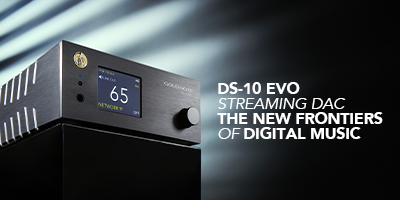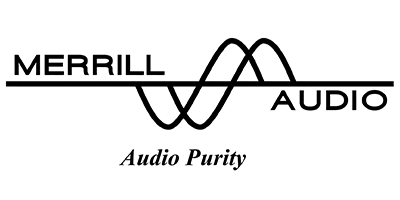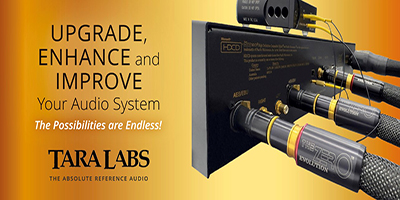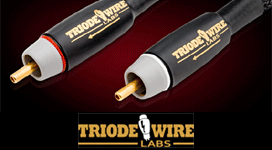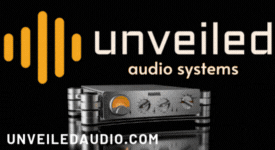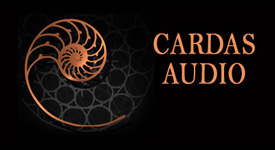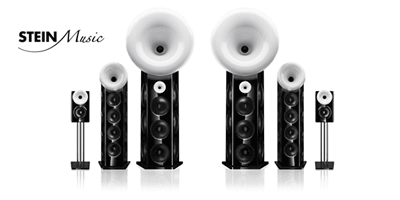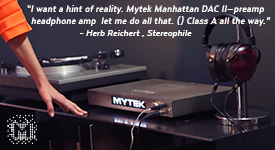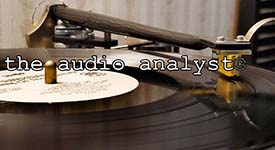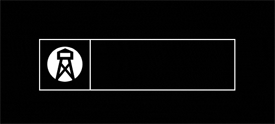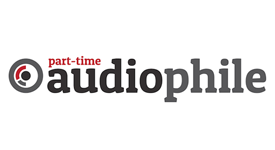The Use of Linear DC Power Supplies for Sound Quality Improvement of Streaming Audio
I acquired an EverSolo DMP-A8 music streamer in February of 2024. I am of the opinion that this is a great sounding and very versatile unit, and it was a nice addition to my system.
I use it with a Benchmark DAC 3B outboard DAC, and the two are connected via a Cardas Clear HS USB cable. It’s a great sounding combination; very musical and engaging to listen to.
I had read that replacing the cheap wall-mount switching mode power supply (SMPS) provided by most Internet service providers with their modem-router-switch units, with a quality linear power supply (LPS), can substantially improve the sonics of streaming audio. The SMPS that came with my modem-router-switch is a 12 VDC at 3A unit. It’s the lowest cost common denominator unit provided by the manufacturer of the router, and the DC output is full of electrical noise, which is typically harmonics of the switching frequency.
Candidly, I was somewhat skeptical of this claim. How can the quality of the DC power provided to the modem-router-switch improve the sonics? These units are strictly digital devices, with no analog electronics.
Above photo: The linear power supplies (PSU) I use for providing very pure DC operating power to our modem-router-switch unit, and the two single-mode fiber-optic media converter units used for the optical connection between the gigabit LAN port on the router, and the gigabit LAN port on the EverSolo DMP-A8 Streamer.
The modified Lambda 12 VDC linear PSU is the gray-colored unit on the right; it provides operating power to the modem-router-switch.
The black-colored linear PSU provides +12 VDC operating power to both fiber-optic media converter units. It sits on top of a pair of Corcom Model 3EQ1 high-performance AC line filters I had built into some discarded power supply housings rescued from junked desktop computers obtained at the local town recycling center.
Both PSUs derive their AC power from these line filter units. I highly recommend including the 3EQ1 within any homebrew audio project where conditioned AC power may not be available, and they appear frequently on eBay.
Discussion: I acquired a used, industrial-grade Lambda LNS-Y-15 15 VDC at 3 amps LPS at a local hamfest. My router requires +12 VDC operating power at around 0.6A. After getting the schematic and parts list for this LPS from TDK-Lambda, I determined that it would be very simple to convert this 15 VDC power supply to the 12 VDC variant. Three resistor values and a Zener diode within the regulator circuit had to be changed to make this happen.
I knew beforehand that the Lambda 12 VDC and the 15 VDC PSUs, aside from having regulator circuitry differences, also had different power transformers. The power transformer secondary voltage in the 12 VDC unit is around 3 volts lower than that of the 15 VDC version. This could be an issue in terms of over-voltaging the regulator circuit during a high line voltage condition, possibly creating thermal overload of the series pass transistor, etc., so I ran some tests before integrating the modified PSU with the modem-router-switch.
In order to provide the correct transformer secondary voltage in the 12 VDC configuration, the AC input to the modified PSU has to decrease from the nominal 120 VAC, to 108 VAC. A quick calculation determined that around 100 ohms in series with the AC input to the PSU would do the trick. Putting a series voltage dropping resistor at the output of the LPS would of course destroy its voltage regulation.
Not having a suitable resistor of adequate power rating, I used a pair of 50 ohm and 45 ohm Dale chassis-mount power resistors in series. At 122 VAC line voltage, which is the average line voltage here, the secondary voltage on the power transformer was right at the Lambda spec. I checked the PSU operation over the Lambda rating for low and high-line voltage conditions (105 to 127 VAC), and with a 20 ohm power resistor to simulate the router load, it held right at +12 VDC output.
Not wanting to spend any money or real effort on the equipment to see if indeed an LPS can improve the sonics of streaming audio by improving the quality of the DC power to the modem-router-switch, I decided to build a test mule power supply first, using the modified Lambda LPS, and all junk box parts. It’s a real engineer’s breadboard, as you can in the images.
I connected the modified Lambda LPS to the router. It booted right up.
I then fired up the stereo. The streaming audio sounds amazing, much better than with the stock SMPS that came with the modem-router-switch unit; completely engaging to listen to, and it does everything sonically right, at least to my taste and my ears. No listening fatigue whatsoever, no electronic or mechanical sound; if you hear any of this, it's in the recording/source material. It’s very stereo sounding, with great clarity, depth, imaging, and soundstaging.
A few weeks later, I added a Corcom AC line filter to the input of this Lamba linear power supply. This device is specifically designed to filter out the noise created by switching mode power supplies, and in my application, it is used to suppress any switching mode power supply noise present on the AC line from entering the modem-router-switch linear power supply.
After 4 hours of a thoroughly engaging listening session, I powered everything down.
It really is amazing how a good linear PSU, when replacing a poor-quality noisy switching mode PSU used for operation of the Internet modem-router-switch, can literally transform the sound of streaming audio. The broadband noise created by poor quality switching mode power supplies increases the phase jitter in the Ethernet data received by the streamer, and this of course results in data timing errors, and that resulting harsh sound so often associated with digital audio.
Total cost; $5.00 for the Lambda LPS. This chassis was originally a multiple-output linear PSU from some industrial electronic equipment, and it was given to me a number of years ago by a fellow ham radio enthusiast friend. I stripped out the parts I could use, and now the chassis has been recycled in the form of this project.
Those of you who are listening to streaming audio through a very revealing system may want to give the addition of an LPS to your modem-router-switch some serious thought.
And then, a few months later ...
The data link between my modem-router-switch and the EverSolo DMP-A8 Streamer was via Wi-Fi.
I had read that using a Wi-Fi connection between the modem-router-switch and the music streamer may not offer the best possible audio quality, and that a fiber-optic Ethernet connection using single-mode optical fiber, may actually be the best sounding transmission media for this type of application.
I obtained a pair of industrial-grade 10/100/1000 Mbps fiber-optic media converters with single-mode optical SFPs (Small Form-Factor Pluggable), and connected one of them to a gigabit LAN port on the modem-router-switch, with the other end of the optical link connected to the gigabit LAN port on the music streamer. A pair of 2-foot garden-variety unshielded CAT-6E cables were used for connecting the electrical Ethernet-side of the media converters to the devices at each end. The fiber between the two media converter units is 10 meters of standard-grade single-mode optical fiber. I am using a Chinese-made, eBay-sourced 12 VDC linear power supply to provide operating power to both media converters, only because I could not build a similar device as inexpensively! As noted earlier, operating power to our modem-router-switch is provided by a modified (by me) Lambda industrial-grade 12 VDC linear power supply. There are no electrically-noisy switching mode power supplies used anywhere within my music streaming system.
I fired up the stereo. The optically-streamed audio sounds amazing; much better than with the Wi-Fi connection had I been using previously. The most apparent sonic improvements I had heard were a more open and transparent soundstage with greater depth, and less harshness to the reproduction. It is completely engaging to listen to, and it does everything sonically right, at least to my taste and my ears. There is no listening fatigue whatsoever, no electronic or mechanical sound; if you hear any of this, it's in the recording/source material. It’s very stereo sounding, with great clarity, depth, imaging, and soundstaging.
And my wife Janet agrees!
After 5 hours of a thoroughly engaging listening session, I powered everything down.
I attribute the improvement in audio quality using the fiber-optic connection between the modem-router-switch and the EverSolo music streamer to two things:
-A substantial reduction in phase jitter and noise due to the inclusion of the optical link, when compared to the Wi-Fi connection.
-The galvanic isolation provided by the fiber. Although Ethernet copper cable connections are transformer-coupled between devices, you still don't have the kind of electrical isolation that a fiber-optic interface achieves. Although Wi-Fi does of course provide complete galvanic isolation, this in itself does not explain why the fiber-optic connection between the modem-router-switch and the EverSolo music streamer provides so much of an improvement in sound quality.
Those of you who are listening to streaming audio through a very revealing system may want to also consider the addition of a fiber-optic connection for hauling the Ethernet data between your home data network and your music streamer.
In summary, it only took me 35 years to get to where I am now with regard to achieving what I’ve always wanted from a high-fidelity reproduction system. Yes, there’s always room for improvement, but I’ve stopped chasing what others have called the “absolute sound”, as I don’t think this is technically possible. At this point, I don’t anticipate making any further significant near-term changes to my system. I and my wife just want to enjoy the music, and my system makes that happen for us. After all of these years enjoying everything related to audio, I think I have finally arrived at a place where I want to be.
Wow! A huge "Thank you!" to Bruce for his article. Thank you so much, Bruce, for sharing your life in enthusiast audio with all of us here! A totally enjoyable and fascinating read from beginning to end. 🙂
I have to say that I'm rather awestruck at what Bruce has accomplished with his audio system, and Bruce is truly a modern day Leonardo da Vinci of audio. I was delighted to see Bruce advocate for the use of - and a contemporary development of - high-performance equalization, something I have been wishing for years now would become a standard tool for dialing in HiFi performance once again. Over the years I have been looking at pro audio equalization as a possibility, but few components I've seen have truly piqued my interest, and none enough to pursue trying.
As mentioned earlier, Bruce has made available the schematics, parts list, and construction notes in this article to those who would like to build - or have built for them - a pair of these remarkable 2-Stage 45/WE-300B SE DHT amps. Be sure to credit Bruce with the design should you build a pair of these amplifiers.
As always, thanks for stopping by, and may the tone be with you!

